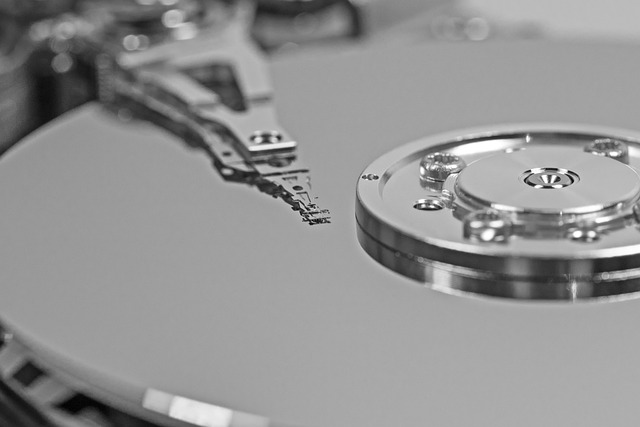MRI contrast dyes revolutionize abdominal imaging by enhancing tissue contrast through T1 and T2 relaxation modifications. This technology improves visualization of organs like the liver, aiding in detecting tumors, inflammation, and fibrosis with greater accuracy. However, patient screening for allergies and underlying conditions is crucial before administration, with close monitoring for potential side effects, especially in individuals with renal issues.
“Discover how MRI contrast dyes revolutionize liver and abdominal imaging. This article explores the transformative power of these agents, enhancing visibility and diagnostic accuracy. Learn how contrast dyes improve MRI scans by highlighting specific liver structures and abnormalities. Understand their mechanism in abdominal scans, safety considerations, and the impact on clinical diagnosis. By delving into these aspects, we aim to highlight the indispensable role of MRI contrast dye in advanced medical imaging.”
Enhancing Liver Visibility: The Role of MRI Contrast Dye
MRI scans have revolutionized diagnostic imaging, offering detailed insights into internal organs and structures. When it comes to visualizing the liver, however, enhancing its visibility is a critical aspect for accurate diagnosis. This is where MRI contrast dyes play a pivotal role. These specialized agents are designed to interact with magnetic fields, creating distinct signals that highlight specific tissue types during the scan.
By strategically injecting these contrast dyes into the patient’s bloodstream, radiologists can better differentiate between healthy liver tissue and abnormal areas. This enhancement allows for more precise identification of conditions like hepatic tumors, inflammation, or fibrosis. The ability to visualize the liver with higher clarity enables healthcare professionals to make more informed decisions, ultimately improving diagnosis and treatment planning for abdominal MRI scans.
Understanding How Contrast Agents Work in Abdominal Scans
Contrast agents play a pivotal role in enhancing abdominal MRI scans by highlighting specific structures within the body. These agents, often referred to as MRI contrast dyes, work by altering the magnetic properties of hydrogen atoms in our tissues. When introduced into the body, the dye interacts with the strong magnetic field and radio waves used in MRI machines, leading to improved signal contrast. This results in clearer images that can better distinguish between different types of tissue, such as fat, muscle, and organs like the liver.
The mechanism behind their effectiveness is based on two primary modes: T1 (relaxation time) and T2 (decay time) contrast. T1 dyes reduce signal intensity by shortening the relaxation time of hydrogen nuclei, while T2 dyes increase signal intensity by prolonging tissue dephasing. In abdominal MRI scans, this translates to better visualization of blood vessels, tumors, or other abnormalities, allowing radiologists to make more accurate diagnoses and ensure optimal patient care.
Improving Diagnostic Accuracy with Contrasted MRI Scans
Contrasted MRI scans have significantly enhanced the diagnostic accuracy in evaluating liver and abdominal conditions. By introducing MRI contrast dye, healthcare professionals can better visualize structures within the abdomen, leading to more precise identification of abnormalities. This technology allows for detailed examination of blood vessels, organs, and soft tissues, enabling radiologists to detect even subtle changes that might be indicative of various pathologies.
The use of MRI contrast dye improves image quality by highlighting specific areas of interest, making it easier to differentiate between normal tissue and abnormal lesions. This contrast enhancement facilitates the detection of tumors, cysts, inflammation, or any other abnormalities that may be challenging to discern on standard MRI scans. Consequently, contrasted MRI scans play a pivotal role in improving diagnostic accuracy, guiding treatment decisions, and ultimately, enhancing patient outcomes.
Safety and Considerations: Using Contrast Dye in Liver Imaging
Using MRI contrast dyes in liver imaging offers significant benefits, enhancing the visibility of structures and enabling more accurate diagnoses. However, safety is a paramount consideration. All patients should undergo thorough screening before administration to ensure they don’t have any known allergies or underlying conditions that could react with the dye. Healthcare professionals carefully monitor vital signs during the procedure to detect any adverse reactions promptly. The most commonly used contrast dyes are generally considered safe, but rare side effects include skin rashes, nausea, and, in extreme cases, kidney damage. Regular follow-up tests help assess the dye’s impact on kidney function, especially for patients with pre-existing renal conditions.
In conclusion, MRI contrast dye plays a pivotal role in enhancing liver visibility and abdominal scan quality. By understanding how these agents work, healthcare professionals can significantly improve diagnostic accuracy, ensuring more effective and safer patient care. The benefits of using MRI contrast dye in liver imaging are well-documented, making it an indispensable tool for navigating the complexities of abdominal diagnostics.
